Full name Bjorn Rune Borg Name Bjorn Borg Height 1.80 m Turned pro 1973 Career end 1993 | Residence Monte Carlo, Monaco Career start 1973 Role Tennis player Grand slams won (singles) 11 | |
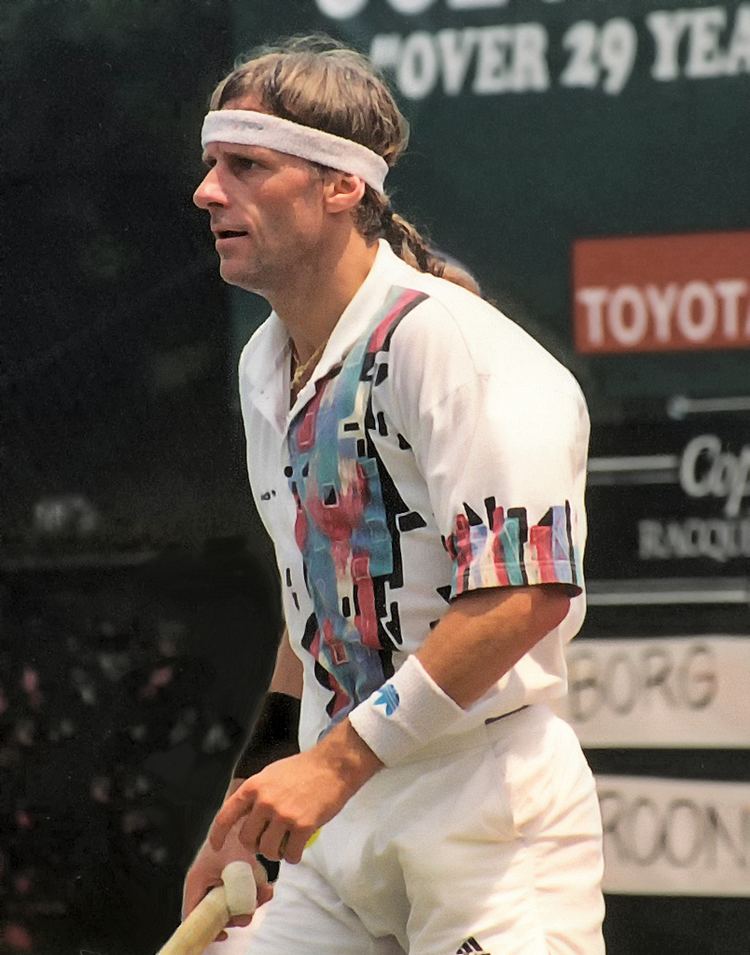 | ||
Retired 4 April 1983 (comeback from 1991 to 1993) Plays Right-handed (two-handed backhand) Spouse Patricia Ostfeldt (m. 2002), Loredana Berte (m. 1989–1993), Mariana Simionescu (m. 1980–1984) Similar People | ||
Björn Rune Borg ([bjœːɳ bɔrj]; born 6 June 1956) is a Swedish former world No. 1 tennis player widely considered to be one of the greatest in tennis history. Between 1974 and 1981 he became the first male professional to win 11 Grand Slam open era singles titles: six at the French Open and five consecutive at Wimbledon. He also won three year-end championships and 15 Grand Prix Super Series titles.
Contents
- Bjorn borg calls federer best ever
- Early life
- Career
- Retirement
- Failed comeback
- Personal life
- Memorabilia preserved
- Distinctions and honors
- Recognition
- Playing style
- Grand Slam tournament and Year End Championship performance timeline
- Open Era records
- Professional awards
- Video
- Greatest tennis player bj rn borg documentary
- Quotes
- References

Borg set numerous Open Era records that still stand, including winning 41% of the Grand Slam singles tournaments he entered and 90% of those matches, winning both the French Open and Wimbledon for three consecutive years, and winning three Grand Slams without losing a set. Also, his total career match win rate of 82.74% remains in the top two of the era.
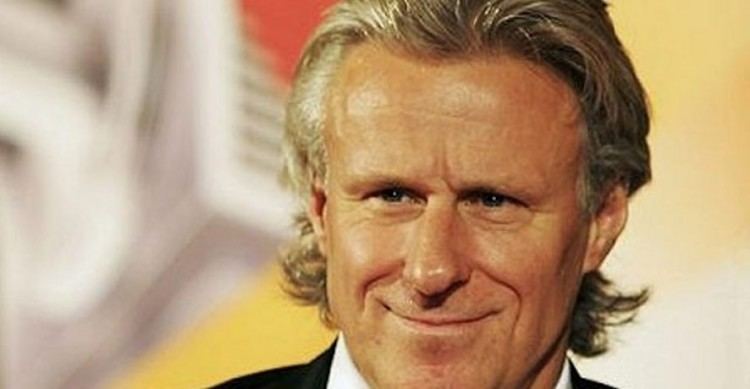
A teenage sensation at the start of his career, Borg's unprecedented stardom and consistent success helped propel the rising popularity of tennis during the 1970s. As a result, the professional tour became more lucrative, and in 1979 he was the first player to earn more than one million dollars in prize money in a single season. He also made millions in endorsements throughout his career. The downside, however, was the constant attention and pressure eventually caused burnout and his retirement at the age of 26.
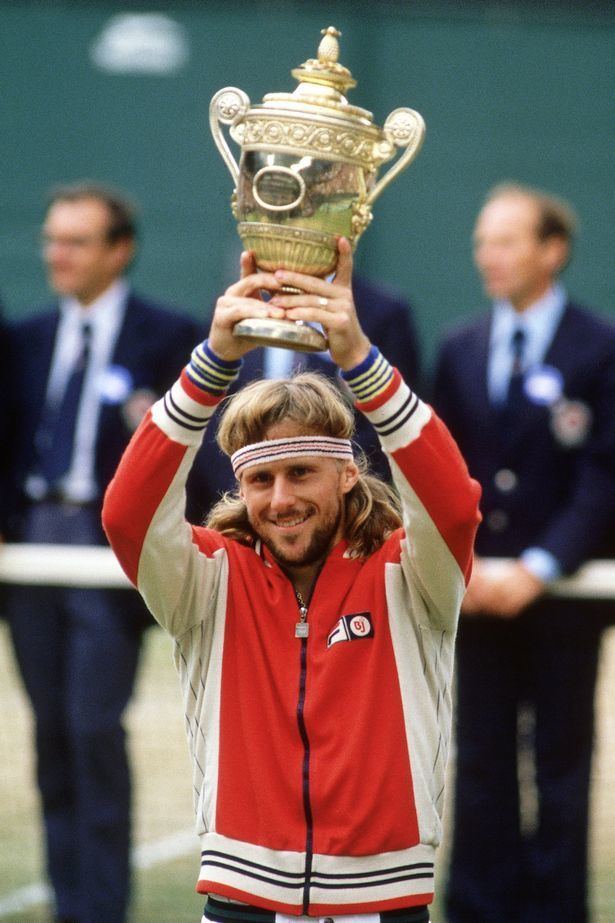
Bjorn borg calls federer best ever
Early life
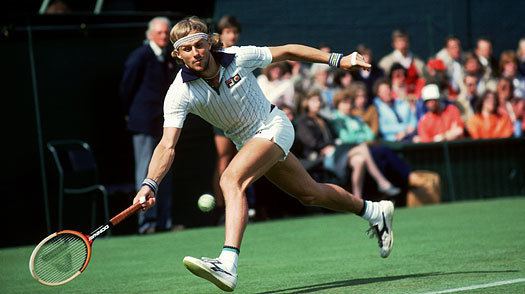
Björn Borg was born in Stockholm, Sweden, on 6 June 1956, as the only child of Rune and Margaretha Borg. He grew up in nearby Södertälje. As a child, Borg became fascinated with a golden tennis racket that his father won at a table-tennis tournament. His father gave him the racket, beginning his tennis career.
A player of great athleticism and endurance, he had a distinctive style and appearance—bowlegged and very fast. His muscularity allowed him to put heavy topspin on both his forehand and two-handed backhand. He followed Jimmy Connors in using the two-handed backhand. By the time he was 13 he was beating the best of Sweden's under-18 players, and Davis Cup captain Lennart Bergelin (who served as Borg's primary coach throughout his professional career) cautioned against anyone trying to change Borg's rough-looking, jerky strokes.
Career
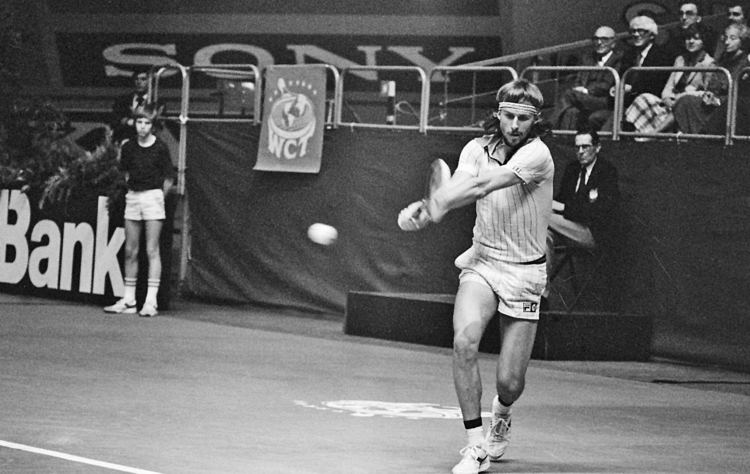
At the age of 15 Borg represented Sweden in the 1972 Davis Cup and won his debut singles rubber in five sets against veteran Onny Parun of New Zealand. Later that year, he won the Wimbledon junior singles title, recovering from a 5–2 deficit in the final set to overcome Britain's Buster Mottram. Then in December he won the Orange Bowl Junior Championship for boys, 18 and under after a straight sets victory in the final over Vitas Gerulaitis.
Borg joined the professional circuit in 1973, reaching the fourth round of his first French Open and the quarterfinals of Wimbledon. Just before his 18th birthday in 1974, Borg won his first top-level singles title at the Italian Open, becoming its youngest winner. Two weeks later he won the French Open, defeating Manuel Orantes in the final in five sets. Barely 18, Borg was the youngest-ever male French Open champion up to that point.
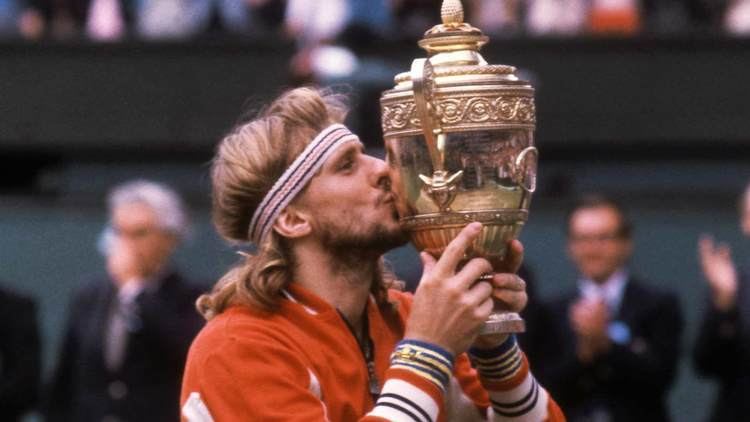
In early 1975, Borg defeated Rod Laver, then 36 years old, in a semifinal of the World Championship Tennis (WCT) finals in Dallas, Texas, in five sets. Borg subsequently lost to Arthur Ashe in the final. Borg retained his French Open title in 1975, beating Guillermo Vilas in the final in straight sets. Borg then reached the Wimbledon quarterfinals, where he lost to eventual champion Ashe. Borg did not lose another match at Wimbledon until 1981. Borg won two singles and one doubles rubber in the 1975 Davis Cup final, as Sweden beat Czechoslovakia 3–2. With these singles wins, Borg had won 19 consecutive Davis Cup singles rubbers since 1973. That was already a record at the time. However, Borg never lost another Davis Cup singles rubber, and, by the end of his career, he had stretched that winning streak to 33—a Davis Cup record that still stands.

In early 1976, Borg won the World Championship Tennis year-end WCT Finals in Dallas, Texas, with a four-set victory over Guillermo Vilas in the final. At the 1976 French Open, Borg lost to the Italian Adriano Panatta, who remains the only player to defeat Borg at this tournament. Panatta did it twice: in the fourth round in 1973, and in the 1976 quarterfinals. Borg won Wimbledon in 1976 without losing a set, defeating the favored Ilie Năstase in the final. Borg became the youngest male Wimbledon champion of the modern era at 20 years and 1 month (a record subsequently broken by Boris Becker, who won Wimbledon aged 17 in 1985). It would be the last time Borg played Wimbledon as an underdog. Năstase later exclaimed, "We're playing tennis, he's [Borg] playing something else." Borg also reached the final of the 1976 US Open, which was then being played on clay courts. Borg lost in four sets to world no. 1 Jimmy Connors.

Borg skipped the French Open in 1977 because he was under contract with WTT, but he repeated his Wimbledon triumph, although this time he was pushed much harder. He defeated his good friend Vitas Gerulaitis in a semifinal in five sets. In the final, Borg was pushed to five sets for the third time in the tournament, this time by Connors. The win propelled Borg to the no. 1 ranking on the computer, albeit for just one week in August. Prior to the 1977 US Open, Borg aggravated a shoulder injury while waterskiing with Vitas Gerulaitis. This injury ultimately forced him to retire from the Open during a Round of 16 match vs Dick Stockton. Through 1977, he had never lost to a player younger than himself.
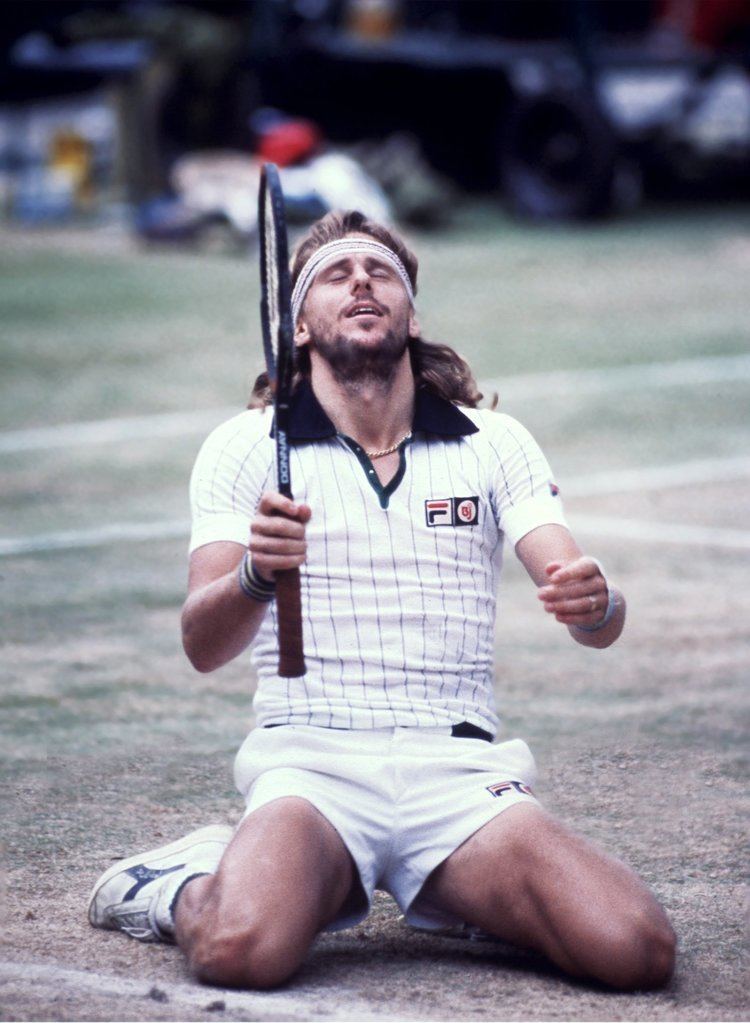
Borg was at the height of his career from 1978 through 1980, completing the difficult French Open-Wimbledon double all three years. In 1978, Borg won the French Open with a win over Vilas in the final. Borg did not drop a set during the tournament, a feat only he, Năstase (in 1973), and Rafael Nadal (in 2008 and 2010) have accomplished at the French Open during the open era. Borg defeated Connors in straight sets at the 1978 Wimbledon. At the US Open, now held on hard courts in Flushing Meadow, New York, he lost the final in straight sets to Connors. That autumn, Borg faced John McEnroe for the first time in a semifinal of the Stockholm Open, and lost to McEnroe.
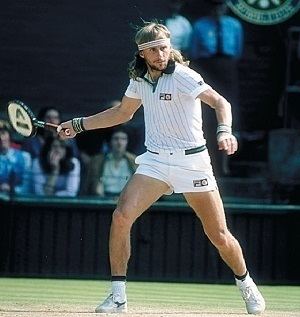
Borg lost to McEnroe again in four sets in the final of the 1979 WCT Finals but was now overtaking Connors for the top ranking. Borg established himself firmly in the top spot with his fourth French Open singles title and fourth straight Wimbledon singles title, defeating Connors in a straight-set semifinal at the latter tournament. At the French Open, Borg defeated big-serving Victor Pecci in a four-set final, and at Wimbledon, Borg took five sets to overcome an even bigger server, Roscoe Tanner. Borg was upset by Tanner at the US Open, in a four-set quarterfinal played under the lights.
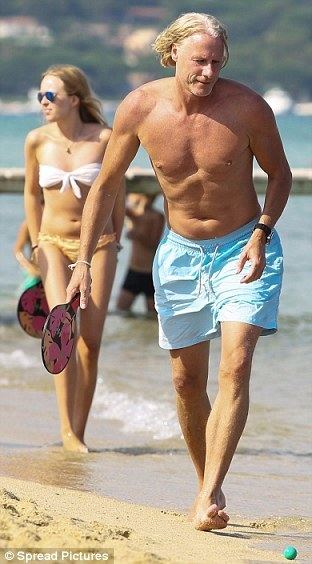
At the season-ending Masters tournament in January 1980, Borg survived a close semifinal against McEnroe. He then beat Gerulaitis in straight sets, winning his first Masters and first title in New York. In June, he overcame Gerulaitis, again in straight sets, for his fifth French Open title. Again, he did not drop a set.
Borg won his fifth consecutive Wimbledon singles title, the 1980 Wimbledon Men's Singles final, by defeating McEnroe in a five-set match, often cited as the best Wimbledon final ever played – the only comparable match being the Federer – Nadal final in 2008. Having lost the opening set to an all-out McEnroe assault, Borg took the next two and had two championship points at 5–4 in the fourth. However, McEnroe averted disaster and went on to level the match in Wimbledon's most memorable 34-point tiebreaker, which he won 18–16. In the fourth-set tiebreak, McEnroe saved five match points, and Borg six set points, before McEnroe won the set. Björn served first to begin the 5th set and fell behind 15–40. Borg then won 19 straight points on serve in the deciding set and prevailed after 3 hours, 53 minutes. Borg himself commented years later that this was the first time that he was afraid that he would lose, as well as feeling that it was the beginning of the end of his dominance.

He defeated McEnroe in the final of the 1980 Stockholm Open, and faced him one more time that year, in the round-robin portion of the year-end Masters, played in January 1981. With 19,103 fans in attendance, Borg won a deciding third-set tie-break for the second year in a row. Borg then defeated Ivan Lendl for his second Masters title.
Borg won his last Grand Slam title at the French Open in 1981, defeating Lendl in a five-set final. Borg's six French Open Grand Slam titles was a record bettered only by Rafael Nadal in 2012.
In reaching the Wimbledon final in 1981, Borg stretched his winning streak at the All England Club to a record 41 matches. In a semifinal, Borg was down to Connors by two sets to love, before coming back to win the match. However, Borg's streak was brought to an end by McEnroe, who defeated him in four sets. Years afterward, Borg remarked "And when I lost what shocked me was I wasn't even upset. That was not me: losing a Wimbledon final and not upset. I hate to lose." Borg around that time felt that his desire to play was gone, despite McEnroe's desperate efforts to persuade him not to retire and continue their rivalry.
Borg went on to lose to McEnroe at the 1981 US Open. After that defeat, Borg walked off the court and out of the stadium before the ceremonies and press conference had begun, and headed straight for the airport. There are reports that Borg received threats after his semifinal win over Connors. In later years, Borg apologized to McEnroe. The 1981 US Open would be the Swede's last Grand Slam final. Major tournaments and tour organizers were enforcing a new rule; by 1982, that players had to play at least 10 official tournaments per year. However, Borg wanted to curtail his schedule after many years of winning so often. Although he felt in good condition physically, he recognized that the relentless drive to win and defy tour organizers had begun to fade.
Borg failed to win the US Open in 10 tries, losing four finals, 1976 and 1978 to Jimmy Connors, and 1980 and 1981 to McEnroe. He played on hard courts at the US Open from 1978 to 1981 and reached the final there on three occasions, in 1978, 1980 and 1981. He led 3–2 in the fifth set of the 1980 final, before losing. That match followed Borg's classic encounter with McEnroe at the 1980 Wimbledon. In 1978, 1979 and 1980, Borg was halfway to a Grand Slam after victories at the French and Wimbledon (the Australian Open being the last Grand Slam tournament of each year at the time) only to falter at Flushing Meadow, lefty Tanner his conqueror in 1979.
He appeared only once at the Australian Open, at the age of 17, at which he lost in an early round.
In 1982, Borg played only one tournament, losing to Yannick Noah in the quarterfinals of Monte Carlo in April. Nevertheless, Borg's announcement in January 1983 that he was retiring from the game at the age of 26 was a shock to the tennis world. McEnroe tried unsuccessfully to persuade Borg to continue. He did, however, play Monte Carlo again in March 1983, reaching the second round, and Stuttgart in July 1984.
Retirement
Upon retirement, Borg had three residences, a penthouse in Monte Carlo, not far from his pro shop, a mansion on Long Island, New York and a small island off the Swedish coast.
Borg later bounced back as the owner of the Björn Borg fashion label. In Sweden his label has become very successful, second only to Calvin Klein.
Failed comeback
In the early-1990s, Borg attempted a comeback on the men's professional tennis tour. In doing so, he grew his hair out as it had been when he retired and returned to using a wooden racket; he had kept his hair cut and used modern graphite rackets in exhibitions he played during the later 1980s. Borg, however, failed to win a single match. He faced Jordi Arrese in his first match back, again at Monte Carlo but without practising or playing any exhibition matches, and fell in two sets. In his first nine matches, played in 1991 and 1992, Borg failed to win a single set. He fared slightly better in 1993, taking a set off his opponent in each of the three matches he played. He came closest to getting a win in what turned out to be his final tour match, falling to Alexander Volkov.
In 1992 Borg, aged 35, using a Donnay Graphite Midsize racket strung at 85 lbf tension, defeated John Lloyd, 37, at the Inglewood Forum Tennis Challenge. Borg later joined the champions tour, returning to shorter hair and using modern rackets.
Personal life
Borg married Romanian tennis pro Mariana Simionescu in Bucharest on 24 July 1980. The marriage ended in divorce in 1984. He fathered a child by the Swedish model Jannike Björling, and he was married to the Italian singer Loredana Berté from 1989 to 1993. In 2002, Borg married for a third time, wedding Patricia Östfeld on 8 June.
He narrowly avoided personal bankruptcy when business ventures failed.
Memorabilia preserved
In March 2006, Bonhams Auction House in London announced that it would auction Borg's Wimbledon trophies and two of his winning rackets on 21 June 2006. Several players then called Borg in an attempt to make him reconsider, including Jimmy Connors and Andre Agassi who volunteered to buy them to keep them together. According to Dagens Nyheter – who had talked to Borg – McEnroe called Borg from New York and asked, "What's up? Have you gone mad?" and said "What the hell are you doing?" The conversation with McEnroe, paired with pleas from Connors and Agassi, eventually persuaded Borg to buy out the trophies from Bonhams for an undisclosed amount.
Distinctions and honors
Recognition
With 11 Grand Slam titles, Borg ranks sixth in the list of male tennis players who have won the most Grand Slam singles titles behind Roger Federer (18), Pete Sampras (14), Rafael Nadal (14), Roy Emerson (12) and Novak Djokovic (12). The French Open—Wimbledon double he achieved three times consecutively was called by Wimbledon officials "the most difficult double in tennis" and "a feat considered impossible among today's players." Only Nadal (in 2008 and 2010) and Federer (in 2009) have managed to achieve this double since, and Andre Agassi, Nadal, Federer and Djokovic are the only male players since Borg to have won the French Open and Wimbledon men's singles titles over their career. Ilie Năstase once said about Borg, "We're playing tennis, and he's playing something else".
In his 1979 autobiography, Jack Kramer, the long-time tennis promoter and great player himself, had already included Borg in his list of the 21 greatest players of all time. And in 2003, Bud Collins chose Borg as one of his top-five male players of all time.
In 2008, ESPN.com asked tennis analysts, writers, and former players to build the perfect open era player. Borg was the only player mentioned in four categories: defense, footwork, intangibles, and mental toughness—with his mental game and footwork singled out as the best in open era history.
Borg never won the US Open or the Australian Open, losing in the final at the US Open four times. The only players to defeat Borg in a Grand Slam final were fellow World No. 1 tennis players John McEnroe and Jimmy Connors. Even though it was then played on grass, a surface where he enjoyed much success, Borg chose to play the Australian Open only once, in 1974, where he lost in the third round. Phil Dent, a contemporary of Borg, has pointed out that skipping Grand Slam tournaments—especially the Australian Open—was not unusual then, before counting Grand Slam titles became the norm. Additionally, another contemporary Arthur Ashe told Sports Illustrated, "I think Bjorn could have won the U.S. Open. I think he could have won the Grand Slam, but by the time he left, the historical challenge didn't mean anything. He was bigger than the game. He was like Elvis or Liz Taylor or somebody."
Playing style
Borg had one of the most distinctive playing styles in the Open Era. He played from the baseline, with powerful ground-strokes. His highly unorthodox backhand involved taking his racket back with both hands but actually generating his power with his dominant right hand, letting go of the grip with his left hand around point of contact, and following through with his swing as a one-hander. He hit the ball hard and high from the back of the court and brought it down with considerable topspin, which made his ground strokes very consistent. There had been other players, particularly Rod Laver and Arthur Ashe, who played with topspin on both the forehand and backhand, yet Laver and Ashe used topspin only as a way to mix up their shots to pass their opponents at the net easily. Borg was one of the first top players to use heavy topspin on his shots consistently.
Complementing his consistent ground-strokes was his fitness. Both of these factors allowed Borg to be dominant at the French Open.
One of the factors that made Borg unique was his dominance on the grass courts of Wimbledon, where baseliners since World War II did not usually succeed. Some experts attributed his dominance on this surface to his consistency, an underrated serve, equally underrated volleys, and his adaptation to grass courts. Against the best players, he almost always served-and-volleyed on his first serves (but he naturally played from the baseline after his second serves).
Another trait usually associated with Borg is his grace under pressure. His calm court demeanor earned him the nickname of the "Ice Man" or "Ice-Borg."
Borg's physical conditioning was legendary and unrivalled. He could outlast most of his opponents under the most grueling conditions. Contrary to popular belief, however, this wasn't due to his exceptionally low resting heart rate, often reported to be near 35 beats per minute. In his introduction to Borg's autobiography My Life and Game, Eugene Scott relates that this rumor arose from a medical exam the 18-year-old Borg once took for military service, where his pulse was recorded as 38. Scott goes on to reveal Borg's true pulse rate as "about 50 when he wakes up and around 60 in the afternoon." Borg is credited with helping to develop the style of play that has come to dominate the game today.
Grand Slam tournament and Year-End Championship performance timeline
Open Era records
Professional awards
Video
Greatest tennis player bj rn borg documentary
Quotes
If you're afraid of losing - then you daren't win
You have to find it No one else can find it for you
It's not easy to part with the trophies However - I do need to have some long-term financial security for those close to me
